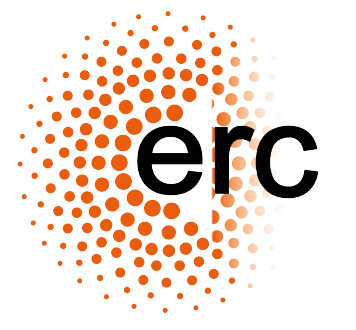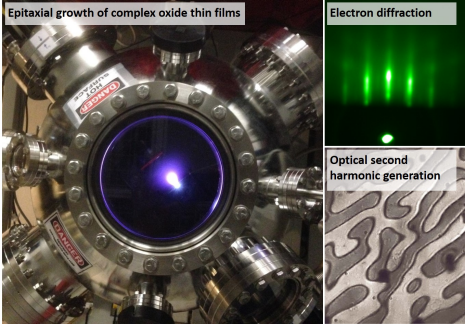INSEETO ERC

IN-situ Second harmonic generation for Emergent Electronics in Transition-metal Oxides

Since transition-metal oxide thin films and heterostructures can be grown with semiconductor-like accuracy, fascinating phases and functionalities have been discovered. Examples are conducting, ferromagnetic or even superconducting interfaces between otherwise insulating materials. So far, electron diffraction (most commonly Reflection High-Energy Electron Diffraction, RHEED) is the only widely established technique for monitoring multilayers in-situ, while they are growing, and provide direct feedback on how to optimize the growth process. During the film deposition, structural information such as thickness, strain state and topography can be collected.
The INSEETO project (IN-situ Second harmonic generation for Emergent Electronics in Transition-metal Oxides) has been awarded with an external page ERC Advanced Grant. In our lab, the leaders of the project will be M. Fiebig and M. Trassin. We will introduce nonlinear laser-optical processes as new in-situ characterization technique.
We plan to use the optical non-linear response of the thin films as a diagnostic tool to monitor in real time the ferroic response of the thin film during deposition. For the first time, we will access the ferroic order when it emerges unit cell by unit cell during the pulsed laser deposition process. For example, ferroelectric critical thicknesses and domain state can in principle be measured in situ for single layers but also in superlattices.
In our group, two aspects will team up: First, our unique expertise in applying non-linear optics in ferroic matter characterization (SHG) and second, high quality epitaxial heterostructures growth (PLD) and thin film characterization capabilities. The PLD lab’s ultra-high vacuum deposition chambers (equipped with RHEED monitoring capacity) will be implemented with a state of the art ultra-fast laser system in order to perform the non-linear optical probe of high quality oxide films in real time.
We expect this direct access to the ferroic state during the growth to uncover new states of matter and functionalities and to improve the current understanding of ferroelectric superlattices behavior.